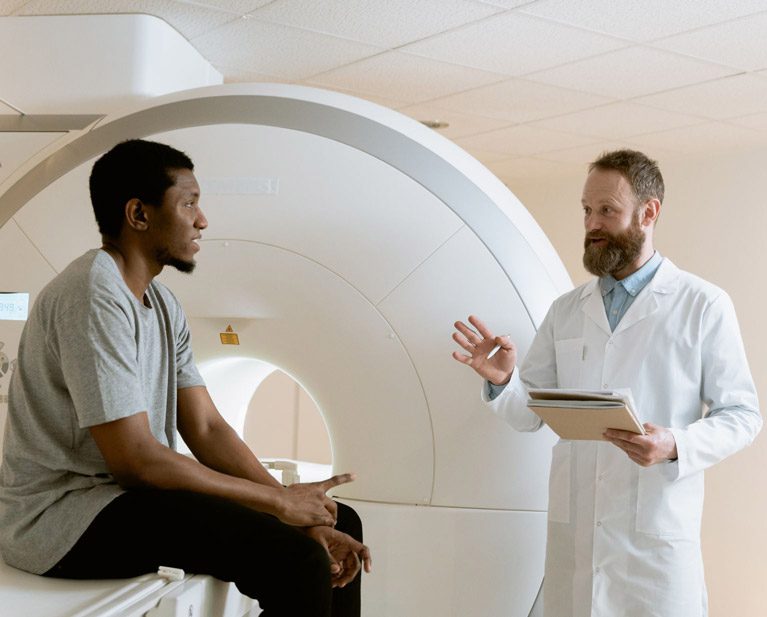Low back pain is a common occurrence for many individuals. In fact, most people first experience back pain between 30-50 years of age and may experience episodes of back pain later on in life as well, with up to 80% of people having back pain sometime throughout their lifetime. Despite the fact that so many people suffer from low back pain, many are confused about the best method of diagnosing and treating their symptoms. You may be wondering, how can my physician or PT know what is going on if they can’t see inside? Shouldn’t I get a Magnetic Resonance Image (MRI) or x-ray to have visual evidence? The answer in most cases is no. Imaging only gets a snapshot in time and while pictures may be good at giving insight into your anatomy, it is not always able to detect the source of your pain. In many cases imaging also does not correlate with function.
There are many changes seen on imaging that are part of the normal aging process and though they may sound scary, they are not cause for concern. In fact, up to 90% of healthy people over the age of 60 have a presentation of bulging disks on MRI. Overutilization of imaging can actually have detrimental effects. For example, this can lead to increased fear surrounding low back pain and resultant fear avoidant behavior. Over imaging can also lead to unnecessary surgical procedures that in many cases do not change a person’s pain or functional levels. For those with acute episodes of back pain, symptoms often resolve within a few days, rendering imaging unnecessary.
How do I know if I really need imaging?
Below you will see a list of signs and symptoms that might in fact warrant an x-ray or MRI of your lower back. **Note that if you are experiencing any of the symptoms listed in red below, please do not wait to seek out medical treatment. These are considered a medical emergency and evaluation/treatment is warranted right away.
- Involvement in traumatic accidents causing injury to the back. It is important in these instances to seek out medical care to determine if imaging is needed to rule out serious pathology such as a fracture.
- Signs of drop foot.
- This is when you feel as though your foot is dragging on the floor and you are tripping. The foot may also feel like it is slapping the ground every time you step.
- Loss of bowel or bladder control.
- The spinal levels associated with controlling your bowels and bladder are located in the lower back. If there is an injury to that area, it is possible, but not always likely to experience loss of bowel or bladder control.
- Significant weakness or loss of function in one or both lower extremities.
- Unrelenting pain that is non mechanical.
- In other words, there are no movements or positions that make the symptoms worse or better. Regardless of what you do or how you move the pain intensity remains the same.
- Continued symptoms after completion of conservative treatment such as physical therapy without improvement.
- We really do mean after conservative treatment, not just the length of time that someone has symptoms.
How can physical therapy help?
Our team of talented Doctors of Physical Therapy can perform a thorough evaluation to determine if there are any red flags, or things that may warrant a trip to your physician. If no red flags are detected, it is safe to proceed with physical therapy. Your therapist will then customize a program that may consist of manual therapy, dry needling, myofascial decompression and exercise, among other interventions, to help alleviate the symptoms you are experiencing. In many cases, the combination of treatments listed above will get you back to doing what you love! Injuries recover faster the sooner they are treated, so if you have back pain, don’t delay. Come see us today!
Sources:
- Infographic: Back Pain (mayoclinic.org)
- Low Back Pain Fact Sheet | National Institute of Neurological Disorders and Stroke (nih.gov)
- Low Back Pain: MRIs Should Be Used Sparingly in Patients With Low Back Pain (jospt.org) Appropriate Use of Diagnostic Imaging in Low Back Pain: A Reminder That Unnecessary Imaging May Do as Much Harm as Good.





